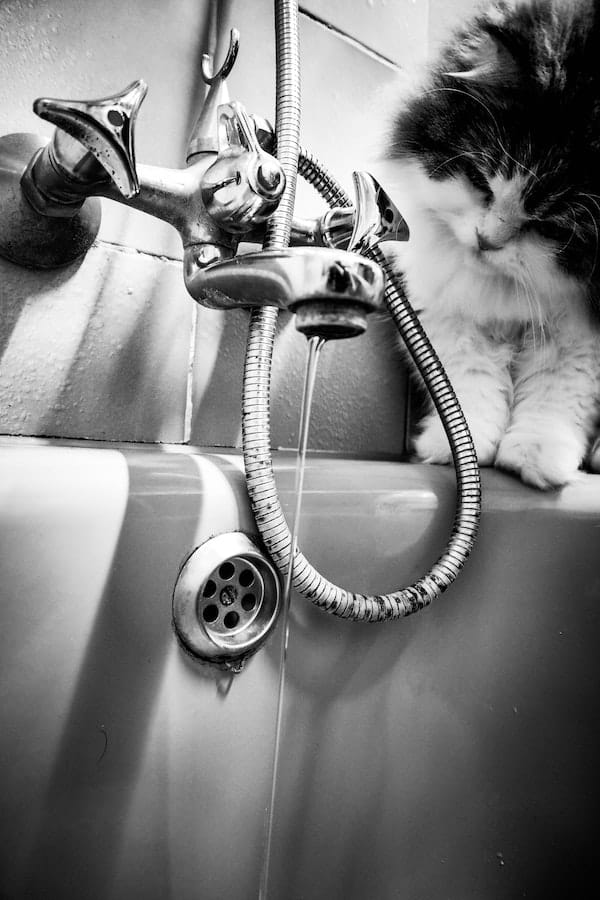
Bathing your cat may seem like a daunting task, but it’s important for their health and hygiene.
Knowing when and how often to bathe your cat can help keep them feeling healthy and looking their best.
In this article, we’ll explore the importance of bathing cats and provide tips on how to do so safely and effectively.
Read on to learn more about how to keep your feline friend looking and feeling their best.
Why it’s important to bathe your cat?

Cats are naturally self-cleaning animals, so you may be wondering why it’s important to bathe them at all. Regularly bathing your cat can help:
- Remove any accumulated dirt, grime, and oils that can cause skin irritations
- Reduce the risk of parasites such as fleas and ticks
- Reduce dander which can lead to allergies and other health issues
- Enhance your cat’s coat by making it appear softer, shinier, and fluffier
- Decrease unwanted odors due to dirt or other factors
- Improve overall skin health by getting rid of bacteria and fungi
When should I bathe my cat?

It’s important only to bathe your cat when it is necessary.
Generally, this means bathing your cat every 4-6 weeks depending on their lifestyle and individual needs.
Regular grooming with a brush or comb will also help keep them clean in between baths.
Some cats may require more frequent bathing if they have skin issues or allergies that need to be managed.
In these cases, it’s best to consult with your veterinarian for advice on how often to bathe them.
There are some common situations that may require a bath for your cat, such as:
- Flea infestations
- Excessive shedding or matting of fur
- Skin conditions such as allergies, fungal infections, and irritated skin
- Odor issues due to excessive dirt or other factors
- Matted fur from neglect or overgrooming
How to Safely and Effectively Bathe a Cat?

Bathing a cat can be challenging, so it’s important to take the necessary steps to ensure its safety and comfort. Here are some tips on how to safely and effectively bathe your cat:
Use a shampoo specifically designed for cats.
It is important to use a shampoo specifically designed for cats when bathing them.
This helps ensure that the product is gentle enough not to irritate their skin or coat while still providing sufficient cleaning power.
Make sure to avoid using human shampoos, as they can be too harsh and could cause skin irritation.
Additionally, look for formulas that are free of harsh chemicals, dyes, and fragrances which could further irritate the skin.
Prepare the area.
Before getting started, it’s important to ensure that you have everything ready for your cat’s bath.
Gather all necessary supplies, such as a cat-safe shampoo, a towel, and some treats for after the bath.
Set up the area with an appropriate size tub or basin that will be comfortable for your cat to fit in.
Place a rubber mat inside the tub so they have something to grip onto and feel more secure while being bathed.
Introduce water gradually.
When bathing a cat, it’s important to introduce the water slowly and carefully.
Start by placing your cat in the tub with its feet touching the bottom. Then, run some lukewarm water over their fur from the back of their neck towards the tail.
Make sure not to get too much water on their head, as this can cause them to panic.
Once your cat is used to the water, you can start wetting its entire body and begin lathering the shampoo into its fur.
Rinse thoroughly.
It’s important to make sure that all of the shampoo residues have been thoroughly rinsed out of your cat’s fur.
This helps avoid skin irritation, discomfort, and an unpleasant odor.
Make sure to pay special attention to areas behind the ears or in between their toes that can be harder to reach.
Once you are done rinsing all of the shampoos off, dry your cat off with a towel and provide them with a few treats for being such a brave kitty.
Final thought
Bathing your cat is an important part of their grooming routine and can provide many benefits, such as making their fur softer, shinier, and fluffier.
It can also help reduce any unwanted odors due to dirt or other factors and improve overall skin health by getting rid of bacteria and fungi.
Bathing a cat can be a challenge, but with the right preparation and technique, it can be made much easier.
Make sure to use a shampoo specifically designed for cats, prepare the area before getting started, introduce water gradually, and rinse thoroughly after shampooing.
With these tips in mind, you will be able to ensure your cat’s safety and comfort during the bath.


GIPHY App Key not set. Please check settings